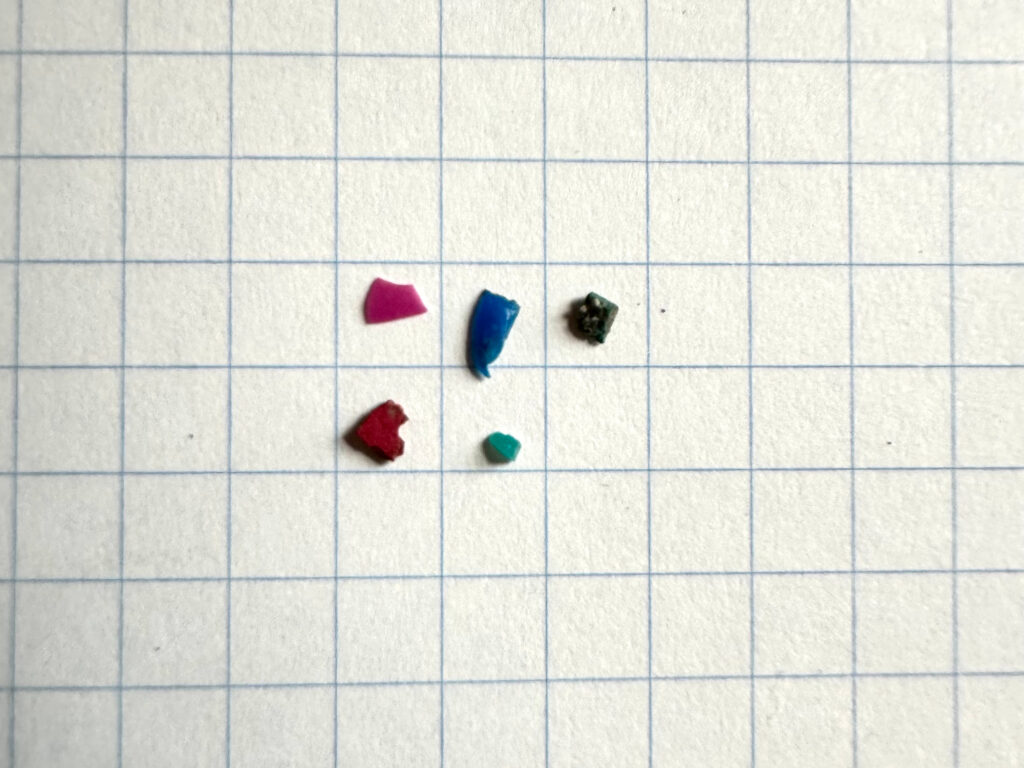What Are Primary and Secondary Microplastics?
You may have heard the term microplastics frequently in recent years. Microplastics are plastic particles less than 5 mm in diameter [1]. They are commonly found in many marine organisms, and there is growing concern about their potential health hazards. Did you know that there are actually two types of microplastics? There are two categories of microplastics: primary microplastics and secondary microplastics. Primary microplastics are intentionally manufactured to be smaller than 5 mm, such as resin pellets (Figure 1), which serve as intermediate materials in plastic production, and microbeads used as exfoliating agents in cosmetics. Secondary microplastics, on the other hand, are fragments of plastic that have been physically, mechanically, or photochemically degraded into smaller pieces after larger plastics have been released into the environment (Figure 2).
Hazards of Primary and Secondary Microplastics
Now that we know there are two types of microplastics, do their hazards differ? One major concern regarding microplastics is the oxidative stress they can cause in living organisms. This oxidative stress arises because microplastics can carry adsorbed toxic substances into the body and physically damage tissues in vivo [1]. Secondary microplastics, which are formed from the breakdown of larger plastics, tend to be more irregular in shape than primary microplastics, which are typically spherical. Because of this irregular shape, secondary microplastics have a larger surface area [2], allowing them to adsorb toxic substances more readily [3]. Moreover, these irregularly shaped particles are known to accumulate more extensively within organisms [4]. As a result, secondary microplastics are generally considered more hazardous due to their greater potential to induce oxidative stress.
Measures for Primary and Secondary Microplastics
When considering strategies to address microplastic pollution, it is helpful to distinguish between their sources. Since the sources of primary microplastics are clearly identifiable, they are more straightforward to regulate. For example, EU Regulation (EU) 2023/2055, which came into effect in September 2023, bans the sale of microplastics, products to which microplastics are intentionally added, and products that release microplastics during use on the EU market [5]. This represents a direct regulatory measure against primary microplastics. In contrast, secondary microplastics are formed from plastics already present in the environment, making them more difficult to control directly. Therefore, preventing the release of plastics into the environment and their subsequent degradation is key. To achieve this, the 3Rs—Reduce (minimize plastic use), Reuse (use products repeatedly), and Recycle (process plastics into new materials)—are essential. In addition, a fourth R, Recovery, which involves the retrieval of plastic waste from the environment, is also vital. We will continue to emphasize recovery efforts, including beach clean-ups and the use of collection equipment, to capture large plastic debris that could become a source of secondary microplastics.


References
[1] Alimba, C.G., Faggio, C., 2019. Microplastics in the marine environment: Current trends in environmental pollution and mechanisms of toxicological profile. Environmental Toxicology and Pharmacology 68, 61–74.
[2] Xia, B., Sui, Q., Du, Y., Wang, L., Jing, J., Zhu, L., Zhao, X., Sun, X., Booth, A.M., Chen, B., Qu, K., Xing, B., 2022. Secondary PVC microplastics are more toxic than primary PVC microplastics to Oryzias melastigma embryos. Journal of Hazardous Materials 424, 127421.
[3] Yukioka, S.; Tanaka, S.; Nabetani, Y.; Suzuki, Y.; Fujii, S.; Takada, H., J. Jpn. Soc. Civ. Eng., Ser. G (Environ. Res.), 74, III_527-III_535., Adsorption characteristics of micropollutants on microplastics focusing on their diameters in the water environment.
[4] Qiao R., Deng Y., Zhang S., Wolosker M. B., Zhu Q., Ren H., Zhang Y., 2019. Accumulation of different shapes of microplastics initiates intestinal injury and gut microbiota dysbiosis in the gut of zebrafish. Chemosphere, 236, 124334.
[5] European Chemicals Agency. “Microplastics.” ECHA, 2024, echa.europa.eu/hot-topics/microplastics (accessed 1 Sep 2024).
Authors: Ai Mizokami, Shogo Ishiyama, Tomoaki Inoue, Masatoshi Nakakuni
